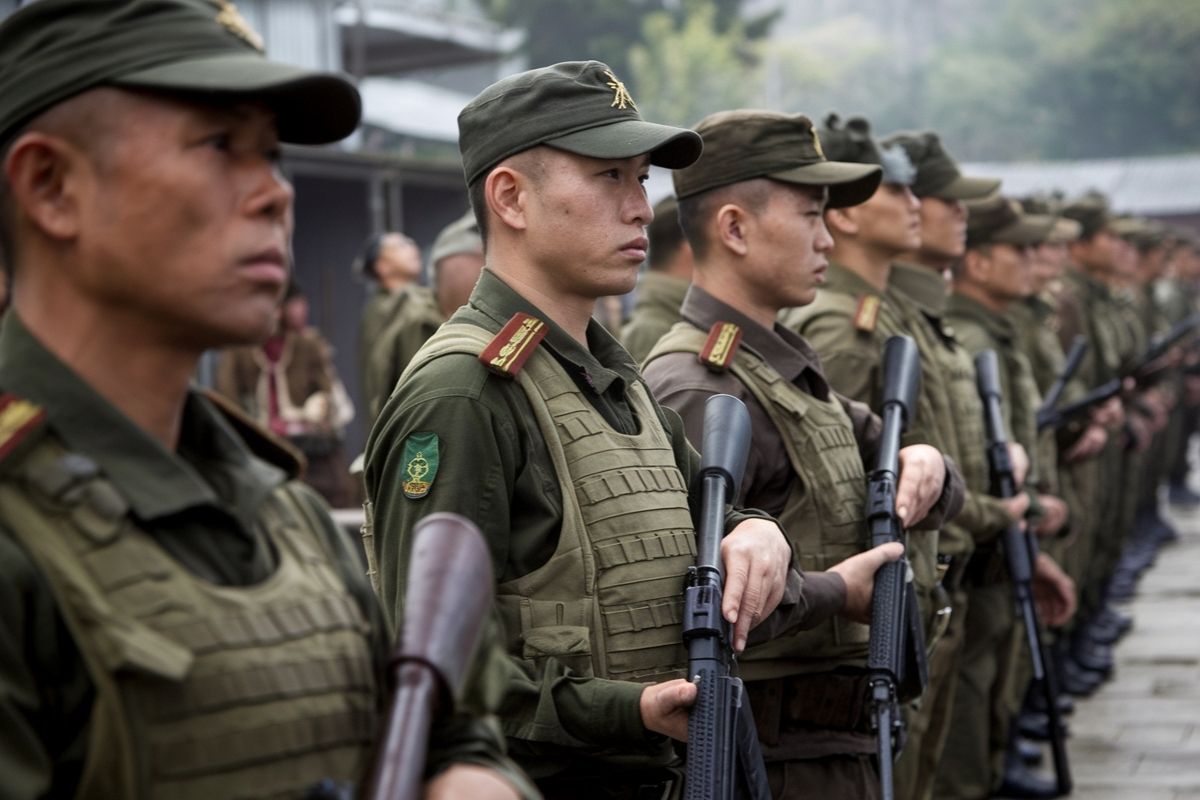
The Campaign to Suppress Bandits in Central and Southern China was a significant military operation in the late 1940s and early 1950s. This campaign aimed to eliminate banditry and consolidate the newly established People's Republic of China. Bandits, often remnants of warlords or former soldiers, posed a threat to the stability of the region. The Chinese government deployed substantial military forces to combat these groups, employing both conventional and guerrilla warfare tactics. Success in this campaign was crucial for the Communist Party to maintain control and ensure the safety of its citizens. Understanding this historical event provides insight into the challenges faced during the early years of the People's Republic of China.
Key Takeaways:
- The Campaign to Suppress Bandits in Central and Southern China was a crucial effort by the Communist government to restore order and stability after the Civil War, using military strategies and facing various challenges.
- This campaign had a lasting impact on China, strengthening the government's authority, providing valuable military experience, and improving public perception, while also being depicted in literature, films, and folklore.
Campaign To Suppress Bandits In Central And Southern China
The Campaign to Suppress Bandits in Central and Southern China was a significant military operation in Chinese history. It aimed to eliminate banditry and restore order in the region. Here are some intriguing facts about this campaign.
Historical Context
Understanding the background helps grasp the campaign's importance.
- Post-Civil War Era: The campaign occurred after the Chinese Civil War, during the early years of the People's Republic of China.
- Bandit Problem: Banditry was rampant, disrupting local economies and causing widespread fear.
- Government Initiative: The Communist government launched this campaign to stabilize the newly established regime.
Key Figures
Several notable individuals played crucial roles in this campaign.
- Mao Zedong: As the leader of the Communist Party, Mao Zedong endorsed the campaign.
- Peng Dehuai: A prominent military leader, Peng Dehuai was instrumental in strategizing the operations.
- Local Leaders: Various local leaders and officials also contributed to the campaign's success.
Military Strategies
The campaign employed various military tactics to achieve its goals.
- Encirclement: Troops encircled bandit strongholds to cut off escape routes.
- Sweep Operations: Systematic sweeps through villages and forests helped locate and capture bandits.
- Intelligence Gathering: Spies and informants provided crucial information about bandit movements.
Challenges Faced
The campaign was not without its difficulties.
- Rugged Terrain: The mountainous and forested regions made operations challenging.
- Bandit Tactics: Bandits used guerrilla tactics, making them hard to catch.
- Local Support: Some local populations supported bandits, complicating efforts.
Impact on Local Communities
The campaign had significant effects on the local populace.
- Economic Stability: Reducing banditry helped stabilize local economies.
- Social Order: Restoring order allowed communities to rebuild and thrive.
- Migration: Some people fled the region to escape the conflict.
Long-term Effects
The campaign's outcomes had lasting impacts on China.
- Strengthened Government Control: Successfully suppressing bandits bolstered the Communist government's authority.
- Military Experience: The campaign provided valuable military experience for future operations.
- Public Perception: The campaign improved public perception of the government as a protector.
Cultural Depictions
The campaign has been depicted in various cultural forms.
- Literature: Several books and articles have been written about the campaign.
- Films: Movies and documentaries have portrayed the events and key figures.
- Folk Tales: Local folklore includes stories about the campaign and its heroes.
Comparisons to Other Campaigns
Comparing this campaign to others provides additional insights.
- Similar Campaigns: Similar efforts were made in other parts of China to suppress banditry.
- Differences: Each campaign had unique challenges and strategies based on local conditions.
- Lessons Learned: Lessons from this campaign informed future military and governmental strategies.
Legacy
The campaign's legacy continues to influence China today.
- Historical Significance: It remains a significant event in Chinese history, symbolizing the struggle for stability and order.
The Final Word on the Campaign
The Campaign to Suppress Bandits in Central and Southern China was a pivotal moment in Chinese history. It showcased the determination of the Chinese government to restore order and stability in regions plagued by banditry. This campaign not only involved military strategies but also efforts to win the hearts and minds of the local population. The success of this campaign played a crucial role in consolidating the power of the Chinese Communist Party and establishing a sense of security among the people. Understanding these facts gives us a clearer picture of the challenges faced and the strategies employed during this significant period. Whether you're a history buff or just curious, these insights offer a deeper appreciation of the complexities involved in restoring peace and order in post-war China.
Frequently Asked Questions
Was this page helpful?
Our commitment to delivering trustworthy and engaging content is at the heart of what we do. Each fact on our site is contributed by real users like you, bringing a wealth of diverse insights and information. To ensure the highest standards of accuracy and reliability, our dedicated editors meticulously review each submission. This process guarantees that the facts we share are not only fascinating but also credible. Trust in our commitment to quality and authenticity as you explore and learn with us.
